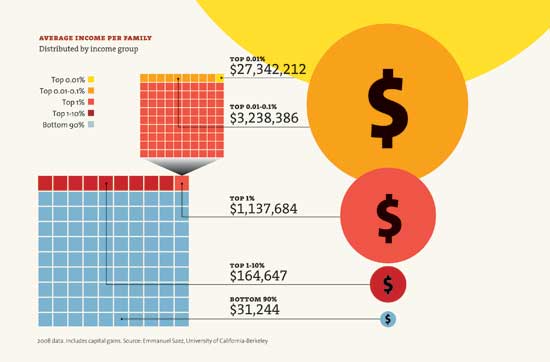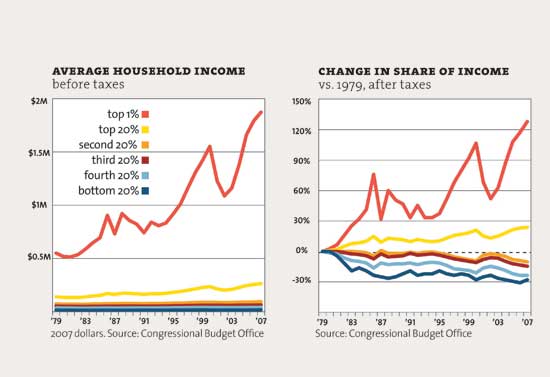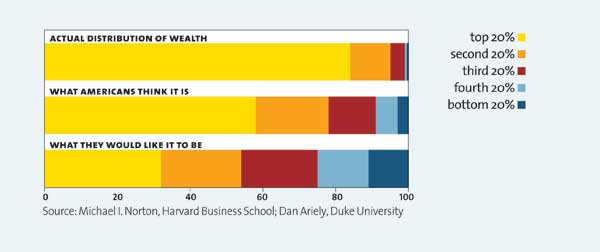On February 23, 2013, Zachary Roth writes on News.Yahoo.com:
The Great Recession and the slump that followed have triggered a jobs crisis that’s been making headlines since before President Obama was in office, and that will likely be with us for years. But the American economy is also plagued by a less-noted, but just as serious, problem: Simply put, over the last 30 years, the gap between rich and poor has widened into a chasm.
Gradual developments like this don’t typically lend themselves to news coverage. But Mother Jones magazine has crunched the data on inequality, and put together a group of stunning new charts. Taken together, they offer a dramatic visual illustration of who’s doing well and who’s doing badly in modern America.
Here are three samples:
• This chart shows that the poorest 90 percent of Americans make an average of $31,244 a year, while the top 1 percent make over $1.1 million:

• According to this chart, most income groups have barely grown richer since 1979. But the top 1 percent has seen its income nearly quadruple:
• And this chart suggests most Americans have little idea of just how unequal income distribution is. And that they’d like things to be divvied up a lot more equitably:
To see the rest of these fascinating charts, click on over to Mother Jones.
The reason the rich are rich is that in large measure their income is derived through dividends, capital gains, interest and rent, through their ownership of wealth-creating, income-generating productive capital assets. The 99 percent class of Americans are essentially propertyless as related to ownership of productive capital assets and are solely dependent on wages and salaries from jobs. The growing rich-poor gap is being propelled by tectonic shifts in the technologies of production that are destroying jobs and devaluing the worth of labor and by globalization, which shifts employment to other countries where labor is less costly as well as regulations and controls.
The role of physical productive capital is to do ever more of the work, which produces income. Full employment is not an objective of businesses. Companies strive to keep labor input and other costs at a minimum. Private sector job creation in numbers that match the pool of people willing and able to work is constantly being eroded by physical productive capital’s ever increasing role.
The result is the consumer populous is increasingly not able to get the money to buy the products and services produced as a result of substituting machines for people. And yet you can’t have mass production without mass human consumption. It is the exponential disassociation of production and consumption that is the problem in the United States economy, and the reason that ordinary citizens must gain access to productive capital ownership to improve their economic well-being.
For solutions see “Financing Economic Growth With ‘FUTURE SAVINGS’: Solutions To Protect America From Economic Decline” at NationOfChange.org http://www.nationofchange.org/financing-future-economic-growth-future-savings-solutions-protect-america-economic-decline-137450624



